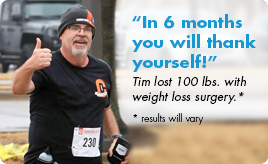
It doesn’t take much to work out a sweat in the sweltering Texas heat and if you’re not careful, the summer temps can be downright dangerous. If you’re planning on an outdoor workout, there are a few things you need to keep in mind to ensure your safety.
You may need to change up your routine. The same exercise routine demands more energy in warm weather compared to cooler weather. More energy spent means you’ll feel fatigued more quickly. You may need to reduce the intensity or the duration of your workout on hot days. Pay attention to how you feel and adjust your workout accordingly.
Give your body time to adjust. Before going full-throttle with your workout, your body will need time to acclimate to the heat. Allow yourself time to adapt by exercising in the heat for 30 minutes to an hour five to 10 days consecutively.
Be aware of the risks. Know the signs and symptoms of dehydration, heat exhaustion and heat stroke. Each of these conditions can be extremely dangerous. Mild to moderate symptoms of dehydration may include:
• increased thirst
• dry mouth
• tiredness
• decreased urine output
• headache
• dry skin
• dizziness
Heat exhaustion is the result of dehydration and the first stage of heat stroke. Some of the symptoms of heat stroke include:
• thirst
• nausea and/or vomiting
• pale, clammy skin
• excessive sweating
• rapid breathing
• weakness or fatigue
• muscle cramps
• light headedness
• headache
If you experience any of the above symptoms, stop what you are doing, drink water and get yourself to a cool area. If you continue to push yourself in the heat your body will lose its ability to cool itself and exhaustion can turn to heat stroke. Body functions rapidly decline when heat stroke occurs, so immediate medical care is essential if you experience any of the following symptoms after spending time in the heat:
• fever
• dry, hot, red skin
• no sweating
• confusion
• fainting
• rapid, shallow breathing
• rapid, weak pulse
• seizures
Keep yourself cool (as much as possible). Pay attention to local heat advisories and warnings and avoid exercising during peak sun hours of 10:00am and 4:00pm. Consider exercises such as cycling or swimming, which can help keep your body cool. Wear less clothing and clothing that is breathable and light-colored.
Stay hydrated. The first step to preventing dehydration, heat exhaustion and heat stroke is to keep your body hydrated. Drink plenty of water throughout the day, regardless of your activity level. Avoid dehydrating beverages such as alcohol and caffeine. Aim to drink at least half your body weight in ounces of water each day.
Exercising outdoors can be great for your mood, but it doesn’t come without risks, especially in the Texas heat. Know the risks and use these steps to keep yourself safe while you workout.












